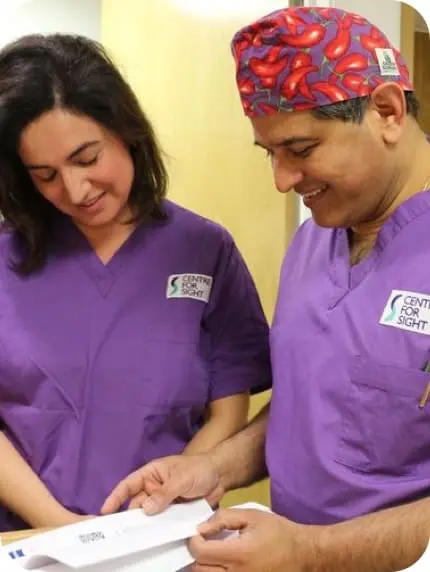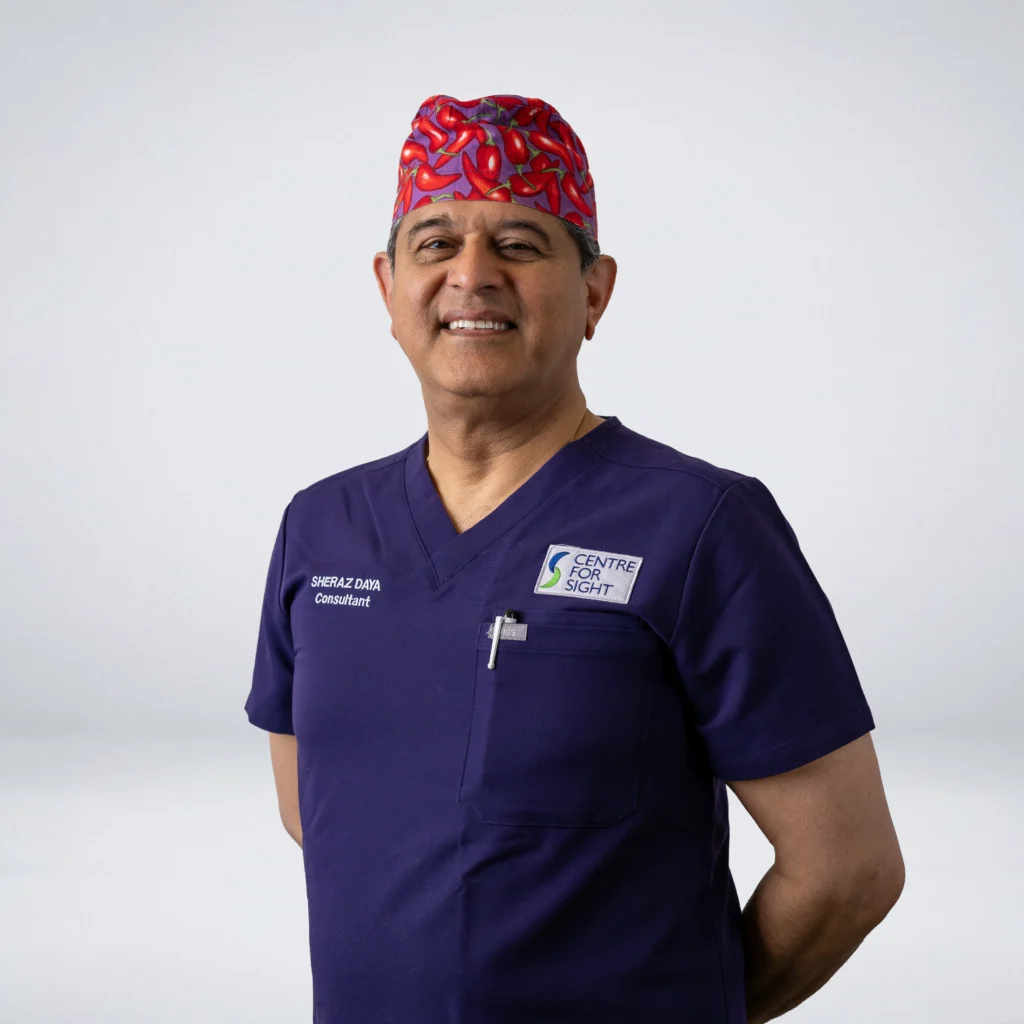- Closed eye surgery
- No chance of blinding Endothelial rejection (by retaining the recipient’s own endothelial layer)
- Can always perform a Penetrating Keratoplasty if visual results are not satisfactory
Deep Anterior Lamellar Keratoplasty (DALK)
A corneal transplant is a sophisticated operation and best in the hands of an experienced corneal surgeon. At Centre for Sight you have the peace of mind of being treated at an internationally renowned centre with patients referred from all over the world.



What is DALK?
Our expertise is not just from our years of experience but also from innovation and development of new techniques for corneal grafting as illustrated for example in the prize winning video on the Femtosecond Laser Deep Anterior Lamellar Keratoplasty page.

DALK (Deep anterior lamellar keratoplasty) is a partial thickness graft that preserves the TWO inner most layers of the cornea: Descemet’s membrane and the endothelium. The goal of the procedure is to retain the endothelial layer of the host. This layer keeps the cornea clear by removing fluid from the bulk of the cornea. Retaining this layer avoids the risk of potentially blinding Graft Rejection that can occur with Penetrating Keratoplasty. If the endothelial layer is normal, then it is worth preserving.
FAQs
- Technically challenging
- Potential for interface scarring (and reduced visual clarity)
This technique was first performed in the UK at Centre for Sight. Lasers are used to create a “tongue and groove” type incision on both the donor cornea and patient. The graft slots beautifully into place and heals very rapidly. Visual restoration is also very rapid. The video above illustrates the Daya Zag-Square technique.
Please click the link here to see our aftercare instructions.
Our Consultants
Author Information
Authored by Sheraz Daya MD FACP FACS FRCS(Ed) FRCOphth, Consultant Ophthalmic Surgeon & Medical Director, June 2019.
Next review due June 2025.
